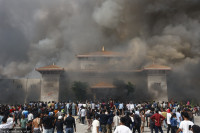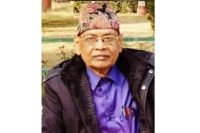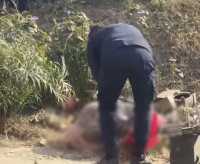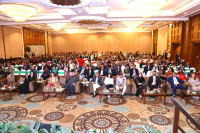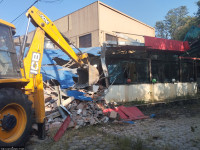Valley
Metropolitan Traffic Police Division launch pilot project in a bid to alleviate traffic woes in the Valley
The Metropolitan Traffic Police Division has introduced a three-month pilot project in a bid to improve the condition of roads and footpaths in the Kathmandu Valley by collaborating with local government and concerned authorities.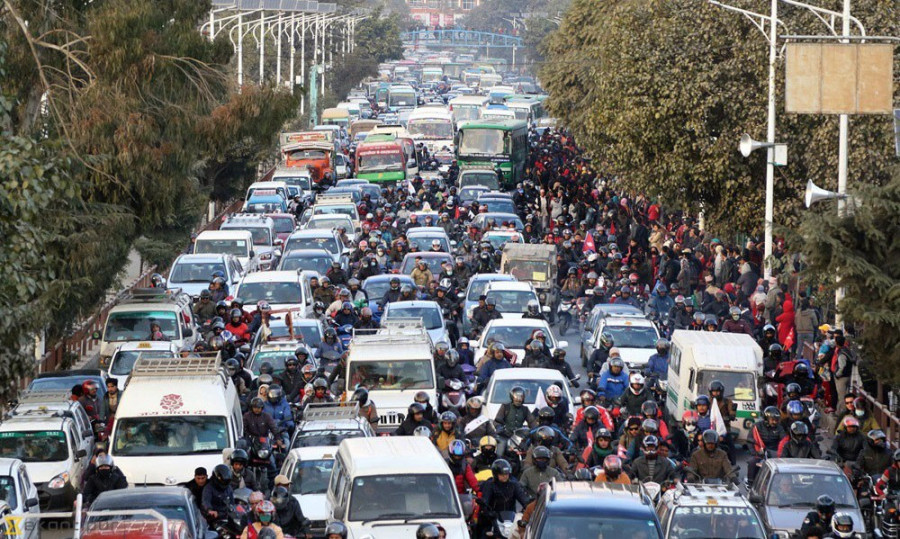
Nayak Paudel
The Metropolitan Traffic Police Division has introduced a three-month pilot project in a bid to improve the condition of roads and footpaths in the Kathmandu Valley by collaborating with local government and concerned authorities.
The pilot project was launched on Tuesday after discussions with the local governments in the Valley and authorities concerned such as the Department of Roads, according to the division.
The project mostly focuses on renovation of the corridor section as areas under the city bridges remain obstructed by mounds of soil accumulated after the construction of the corridor or bridges.
“Since the corridors are obstructed, vehicles mostly use the bridge to cross the road instead of the corridors which cause traffic congestion,” Superintendent of Police Jay Raj Sapkota, spokesperson for the division, told the Post.
The corridor sections at Balkumari Bridge, Gopikrishna Bridge, Ratopul, Setopul, Kalopul and Bhatkekopul are expected to be cleared and operational in the next three months.
Corridors, which were constructed to minimise traffic congestion, have also been used for illegal parking by hundreds of vehicles including pick-up trucks, private four-wheelers and two-wheelers.
Along with clearing corridors for vehicles, traffic police have also sought to remove street vendors from footpaths and streets of New Baneshwor, Old Baneshwor, Pingalasthan, Gaushala, Chabahil, Sinamangal, Koteshwor, Tripureshwor, Kalanki, Thapathali, Jawalakhel and Lagankhel.
As part of the project, 300 zebra crossings across the Valley are also expected to be painted within the next three months.
According to a 2018 ‘Kathmandu Walkability Study’ by the Resource Centre for Primary Health Care, more than 80 percent of roads in the Valley lack zebra crossings. Similarly, 60 percent of zebra crossing marks have disappeared due to discolouration over the years.
Traffic police have also listed nine places—New Baneshwor, Putalisadak, Keshar Mahal, Kalimati, Thapathali, Koteshwor, Chabahil, Gaushala and Narayan Gopal Chowk—in dire need of overhead bridges.
In coordination with Kathmandu Metropolitan City (KMC), traffic police have also started a survey of the Valley roads in order to construct bus pockets within and outside the Ring Road.
A bus pocket is an area constructed on the side of a road for public vehicles to use as pick-and-drop spots for passengers in order to ease traffic jams on the main roads.
“Since we need extra space to construct bus pockets, we are conducting a study. In such bus pockets we will also be constructing smart waiting areas which will have public toilets and a small shop for the convenience of commuters,” Ishwor Man Dangol, spokesperson of KMC, told the Post.
“We are also looking into the possibility of removing petrol pumps located on the side of the roads to prevent accidents,” said Dangol.
In a bid to control the increasing number of accidents along the newly constructed eight-lane Kalanki-Koteshwor road section, traffic police along with the KMC will put up fences on the side of the footpaths along the road sections.
“A five-feet fence bar will be constructed along the Kalanki-Koteshwor road section to prevent the public from crossing roads haphazardly, thereby preventing accidents,” said Sapkota.
Traffic police said they would start clearing obstruction in the corridors, painting zebra crossings and lanes, remove street and footpath vendors, and raise awareness among the general public on traffic rules from April 1.
“The result of this pilot project will allow us to prepare further plans and policies to improve the traffic conditions in the Valley,” said Sapkota.




 15.12°C Kathmandu
15.12°C Kathmandu
